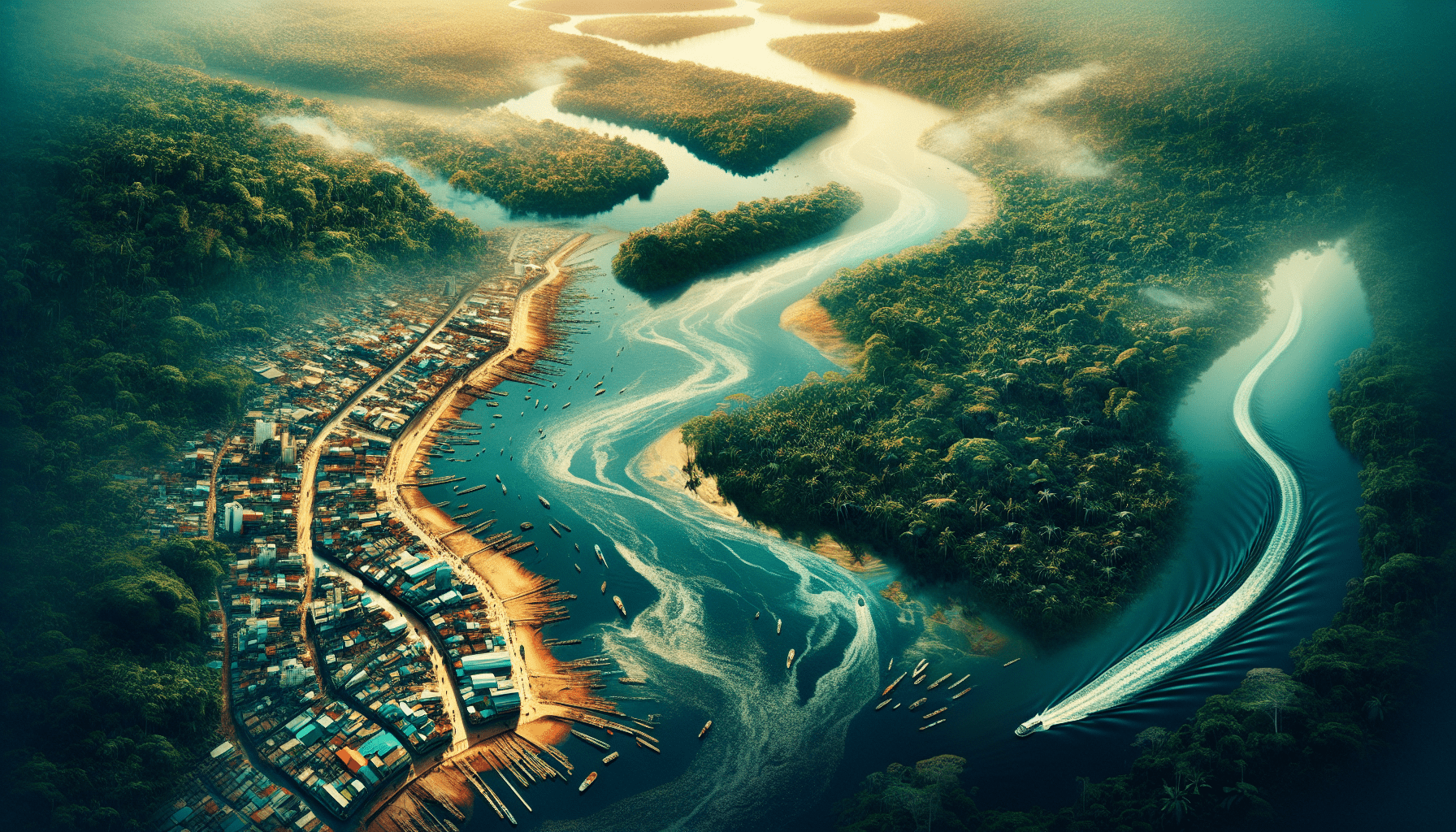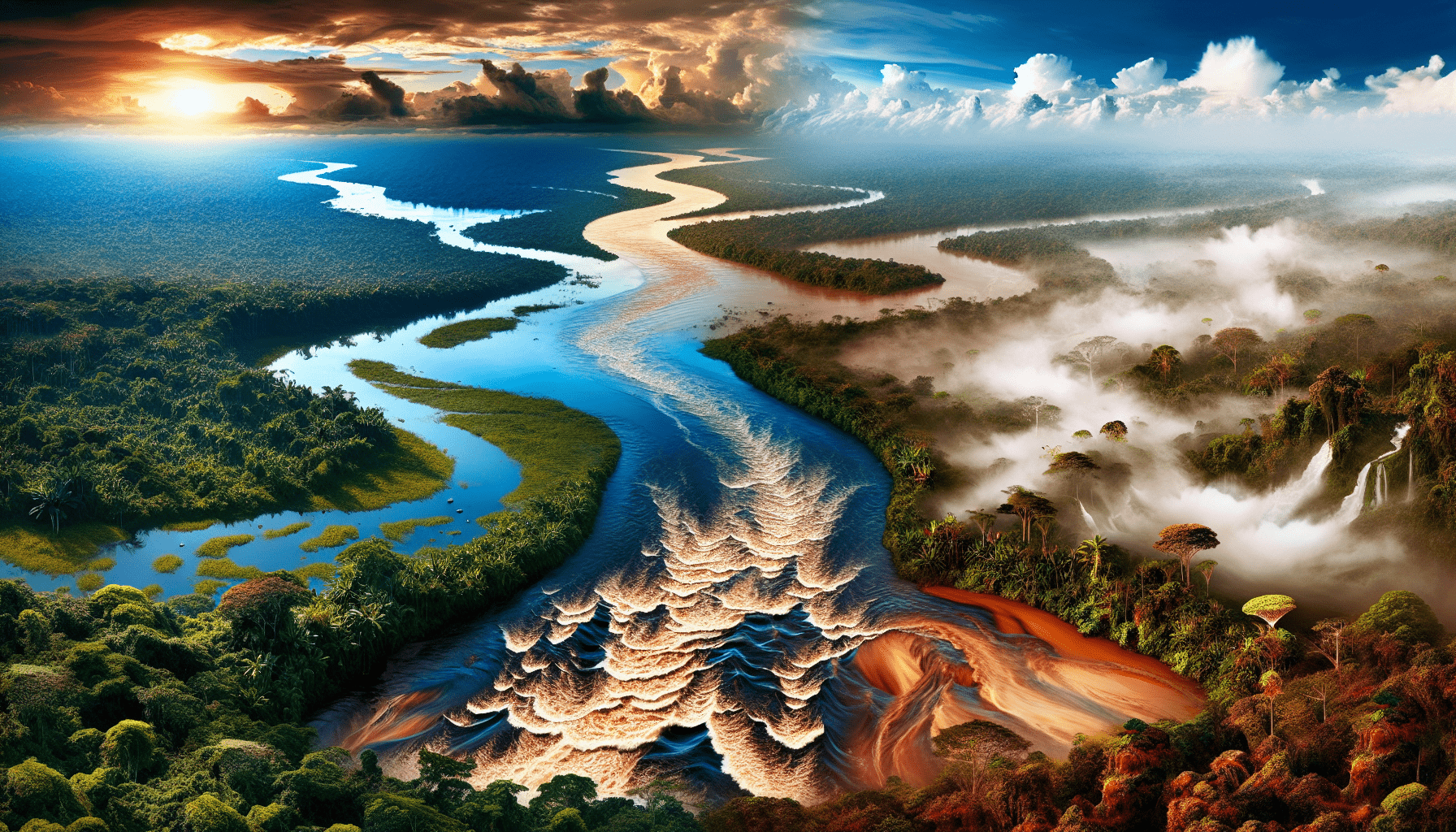
So you’ve probably heard of the mighty Amazon River, known for its vastness and vibrant ecosystem. But have you ever wondered about the quality of its water? Well, let’s get straight to it. Today, we’ll be exploring the question: Does the Amazon River have clean water? From the bustling city of Manaus to the secluded reaches of the rainforest, we’ll take a closer look at the water that flows through this awe-inspiring natural wonder.

Background information
The Amazon River is one of the most renowned and significant natural wonders in the world. Situated in South America, it is the largest river by discharge volume globally, and it stretches over 6,400 kilometers (4,000 miles) from its source in the Peruvian Andes to its mouth in the Atlantic Ocean. The river basin encompasses an astonishing area of approximately 7 million square kilometers (2.7 million square miles), making it the largest drainage basin in the world.
The Amazon River is not only a breathtaking natural beauty but also plays a crucial role in supporting an intricate and diverse ecosystem. It is home to an expansive array of plant and animal species, many of which are found nowhere else on Earth. Additionally, the river sustains the livelihoods of millions of people living along its banks, providing food, water, transportation, and economic opportunities. The Amazon River is undeniably an extraordinary treasure that demands our attention and care.
Water sources
Origin of the Amazon River
The Amazon River finds its origins in the high Andean region of Peru. It begins from two main sources – the Marañón and Ucayali Rivers – which converge near the city of Nauta to form the Amazon. From there, the river embarks on its remarkable journey, collecting water from countless tributaries that flow from the surrounding rainforests.
An overview of tributaries and their water quality
The Amazon River system consists of over 1,100 tributaries, contributing to its incredible size and flow. These tributaries vary in terms of water quality, with some being pristine and others affected by anthropogenic activities. The main sources of freshwater for the Amazon River are the Andean streams, which contribute the majority of its water volume.
The water quality of the tributaries can be influenced by factors such as deforestation, industrial pollution, and agricultural runoff. However, on the whole, the Amazon River enjoys relatively clean and clear waters due to the extensive natural filtration processes it undergoes.
Impact of deforestation on water quality
Deforestation poses a significant threat to the water quality of the Amazon River. As vast areas of rainforest are cleared for agricultural purposes or logging, the natural buffers and filters that help maintain water quality are removed. Without the protection of vegetation cover, erosion rates increase, leading to higher sediment loads in the rivers. Moreover, the extensive use of chemicals in agriculture can result in pesticide contamination of water bodies, which subsequently finds its way into the Amazon River.
These detrimental effects of deforestation highlight the importance of preserving the Amazon rainforest as a crucial defense mechanism for sustaining the water quality of the river.
Water quality indicators
Chemical composition of Amazon River water
The chemical composition of the Amazon River water is highly influenced by the geology of the areas it passes through. It contains essential nutrients such as nitrates and phosphates, which support the growth of aquatic plants and algae. Additionally, the river carries substantial amounts of dissolved organic carbon, contributing to its characteristic brown coloration.
Physical characteristics of the water
The Amazon River is known for its turbid and muddy appearance, mainly due to the large amounts of sediment it carries. The sediment load gives the water a brownish hue and reduces its transparency. Furthermore, the river’s pH levels tend to be slightly acidic, ranging from 6.5 to 6.9, which is within the acceptable range for many aquatic organisms.
Microbiological quality of the water
The microbiological quality of the Amazon River water is generally good. The presence of various microorganisms, including bacteria, fungi, and viruses, is essential for maintaining a healthy ecosystem. However, human activities such as improper waste disposal and sewage discharge can introduce harmful pathogens into the water, potentially leading to health risks for both humans and animals.
Natural filtration processes
Role of vegetation in water purification
Vegetation, particularly the abundant vegetation of the Amazon rainforest, plays a vital role in purifying the water of the Amazon River. The dense vegetation cover captures rainfall and reduces the impact of erosion, preventing excessive sedimentation in the river. Additionally, the complex root systems of trees and plants help filter and absorb nutrients and pollutants, improving water quality and reducing the occurrence of harmful algal blooms.
Sedimentation and settling processes
The Amazon River’s massive volume facilitates natural sedimentation and settling processes. As the river slows down in wider sections or lakes, the sediment it carries gradually settles to the bottom, leaving the water clearer. This process helps remove suspended particles and sediment, further enhancing water quality.
Dilution effect of the river’s massive volume
The Amazon River’s vast size and immense volume enable natural dilution of pollutants. Even with the presence of some contaminants, their concentration is diluted due to the massive amount of water in the river system. This dilution effect helps mitigate the impact of certain pollution sources and contributes to the overall relatively clean state of the Amazon River’s water.

Human activities and pollution
Agricultural runoff and pesticide contamination
Agricultural practices, including the cultivation of crops and livestock farming, can contribute to water pollution in the Amazon River. The excessive use of fertilizers and pesticides can result in runoff, where these chemicals find their way into streams and rivers, ultimately reaching the Amazon. Pesticide contamination poses a threat to aquatic life, affecting both the river ecosystem and the communities relying on the river for their water supply.
Industrial waste discharges
Industrial activities, such as mining, oil extraction, and manufacturing, can introduce toxic substances into the Amazon River. If proper waste management processes are not in place, pollutants from these industries may enter the water, posing risks to aquatic organisms and downstream communities. Implementing stricter regulations and effective monitoring systems are crucial to prevent industrial waste discharges and protect the water quality of the Amazon River.
Informal settlements along the river
The presence of informal settlements along the banks of the Amazon River can contribute to water pollution. These settlements often lack proper sanitation infrastructure, leading to the discharge of untreated sewage and waste directly into the river. The high population density in these areas amplifies the pollution risks, affecting both the river ecosystem and the health of the communities residing there.
Mercury contamination from gold mining
Gold mining in the Amazon basin is a significant source of mercury contamination in the river. Small-scale mining operations often employ mercury in the extraction process, and the careless handling and disposal of this toxic substance result in its release into the environment. Mercury bioaccumulates in aquatic organisms, gradually moving up the food chain and posing health risks to humans and wildlife alike.
Efforts for water conservation
Conservation projects in the Amazon Basin
Numerous local and international organizations are dedicated to conserving the Amazon River and its surrounding ecosystems. Conservation projects aim to protect the rainforest, restore degraded areas, and promote sustainable land-use practices. These efforts play a vital role in preserving the natural filtration processes and ensuring the long-term water quality of the Amazon River.
Water monitoring programs
Water monitoring programs are crucial for assessing the current state of the Amazon River’s water quality. By regularly sampling and analyzing the water, scientists can identify trends, detect emerging contaminants, and develop strategies to mitigate pollution. Monitoring programs also serve as early warning systems, enabling rapid responses and remedial actions to minimize the impact of pollution on the river ecosystem.
Partnerships with local communities
Engaging with local communities that depend on the Amazon River is essential for effective water conservation. Collaborative partnerships empower communities to actively participate in decision-making processes and promote sustainable practices. By involving the local population, conservation efforts can be more culturally sensitive, economically viable, and socially inclusive, ensuring the protection of the river’s water quality for generations to come.
Promoting sustainable practices
Promoting sustainable practices, such as responsible agriculture, regulated industrial activities, and proper waste management, is crucial for preserving the water quality of the Amazon River. Encouraging eco-friendly practices and raising awareness about the consequences of pollution can help change behaviors and reduce the negative impact of human activities on the river ecosystem.
Balancing development and conservation
Challenges of balancing economic growth and environmental protection
Balancing economic growth and environmental protection is a complex challenge when it comes to the Amazon River. The region holds immense potential for economic development, attracting industries, infrastructure development, and population growth. However, these advancements must be carefully managed to minimize their impact on the fragile ecosystem of the Amazon River. Achieving a harmonious balance between economic prosperity and environmental conservation is crucial for the long-term sustainability of the river and its surrounding areas.
The role of government regulations and enforcement
Government regulations and enforcement play a pivotal role in safeguarding the Amazon River’s water quality. Implementing and enforcing strict environmental laws, such as pollution control measures and land-use regulations, can help prevent and minimize the negative impact of human activities. Governments must actively collaborate with stakeholders, including industries, local communities, and conservation organizations, to ensure compliance with regulations and promote responsible practices.
Education and awareness campaigns
Education and awareness campaigns are vital components in the pursuit of water conservation in the Amazon River. By educating the public about the importance of preserving the river’s water quality and the potential consequences of pollution, individuals can make informed choices that contribute to the protection of this valuable resource. Additionally, raising awareness about sustainable practices and highlighting success stories can inspire others to take action and support the conservation efforts for the Amazon River.
Potential threats and future outlook
Climate change impact on the Amazon River
Climate change poses significant challenges to the Amazon River and its ecosystem. Rising temperatures, altered rainfall patterns, and prolonged droughts can disrupt the delicate balance of the river’s water cycle. These changes may lead to increased water scarcity, altered water quality, and shifts in biodiversity, potentially threatening the sustainability of the Amazon River ecosystem. Addressing climate change and its impacts is crucial to ensure the long-term health and resilience of this extraordinary river.
Long-term sustainability of the river ecosystem
The long-term sustainability of the Amazon River ecosystem depends on concerted efforts to mitigate pollution, conserve the surrounding rainforest, and promote sustainable practices. It requires collaboration among governments, conservation organizations, local communities, and individuals to protect the water quality and overall health of the river. By recognizing the value of this natural wonder and working together, we can secure a future where the Amazon River continues to thrive and provide for both nature and humanity.
Conclusion
The Amazon River is a remarkable natural treasure that captivates our imaginations and sustains countless species and communities. While it faces various challenges and threats to its water quality, including deforestation, pollution from human activities, and the impacts of climate change, concerted efforts are underway to protect and conserve this invaluable resource. By understanding the complexities of the river’s ecosystem, implementing effective regulations, promoting sustainable practices, and fostering partnerships with local communities, we can work towards ensuring the Amazon River remains a beacon of biodiversity and a life-giving force for generations to come.



